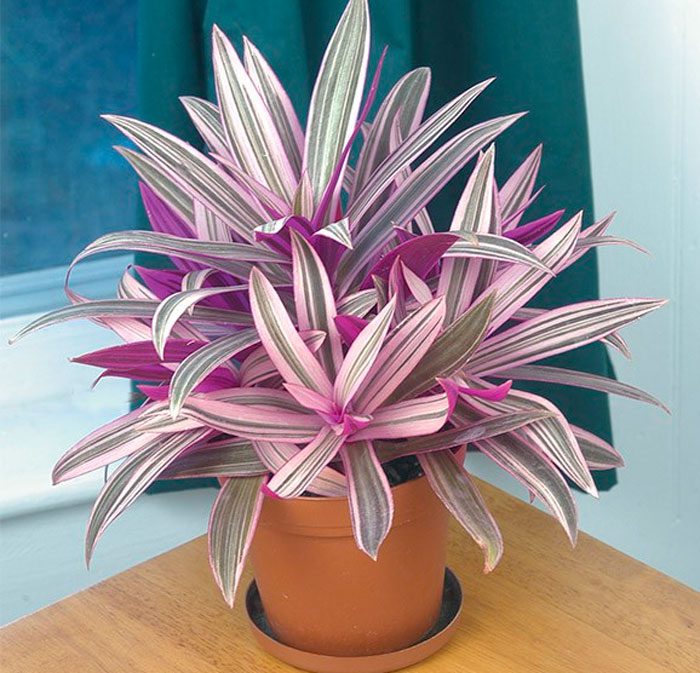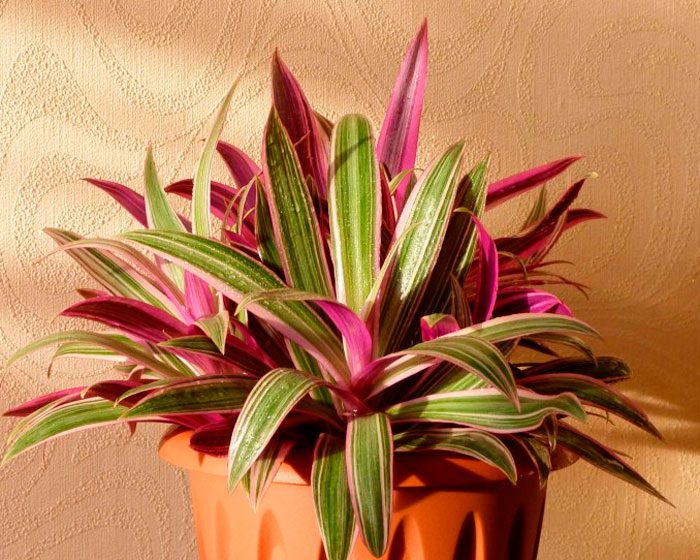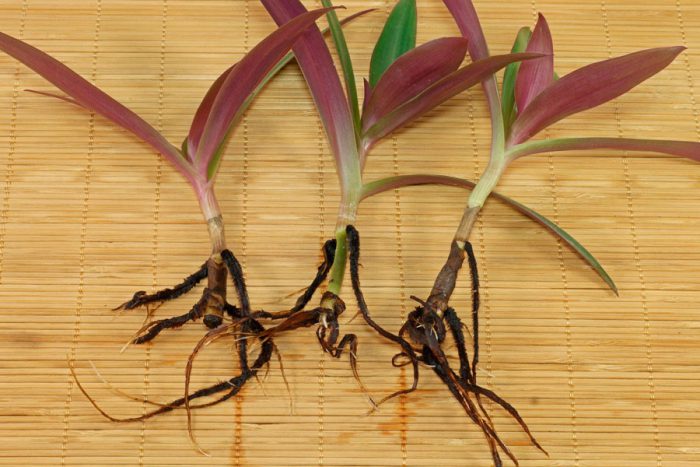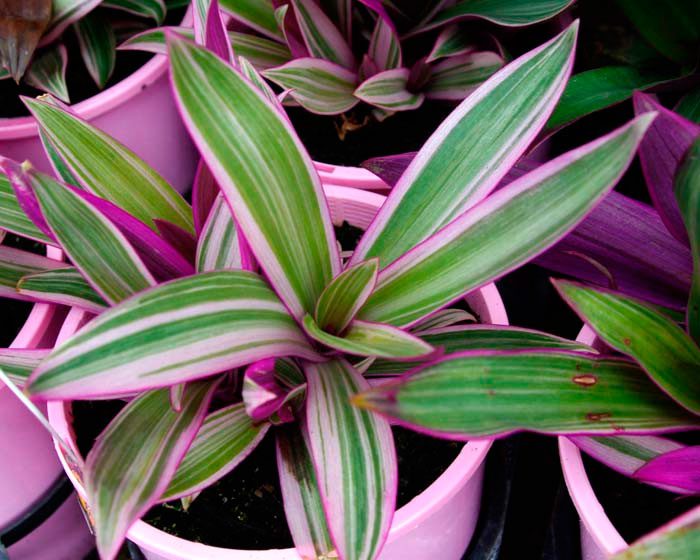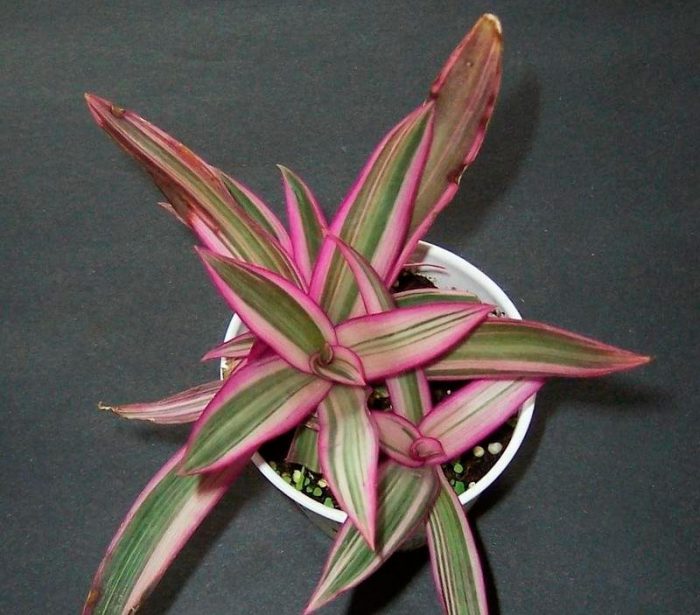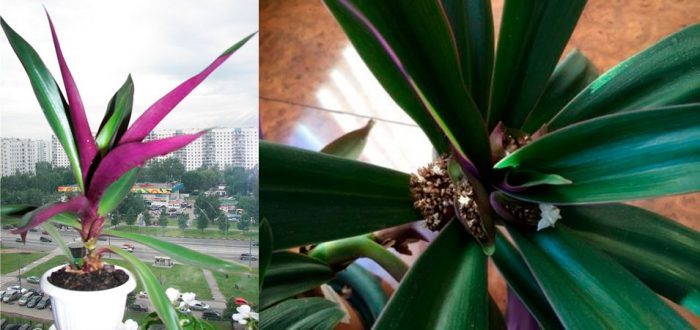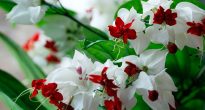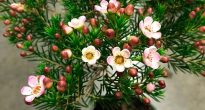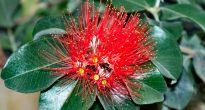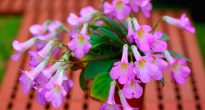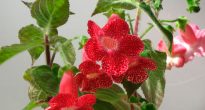For a novice florist, Rheo is perhaps the most suitable flower that allows you to withstand the consequences of improper care. Caring for it does not require much effort, just like cyperus, cactus or sansevier, while it is as beautiful as dracaena. Many people attribute this flower to one of the types of Tradescantia, but this is not entirely true. Rheo is indeed a close relative of Tradescantia, but many botanists believe that this flower belongs to a separate genus - the genus Rheo.
The advantages of this flower are that it can bloom throughout the year and has extremely decorative leaves, a dark purple hue. He loves it when there is a lot of light around. It is ideal for growing in a single apartment or large office, shopping center, bank, theater, etc. He can successfully cope with the decoration of any interior, while requiring minimal care: watering and feeding. From time to time, the flower should be transplanted and divided, providing it with normal conditions for development.
Content
Caring for a reo flower at home
Seat selection
Since the plant is very fond of light, a suitable place for it is the area of the southern window, although during periods of maximum activity of sunlight, it is advisable to shade the flower a little.
Watering
Reo feels very good when there is a lot of moisture. This is the only flower of its kind that will not be brought into a "coma" state if excessive moisture is present. In this regard, watering this flower can be entrusted to all wishing household members, including children. In winter, watering should be reduced, but it is not advisable to allow soil oversaturation. For irrigation, it is better to use rainwater, but settled water. During watering, you should control so that water does not enter the internodes, as this can lead to rotting of the stems.
Another important point to pay attention to is regular spraying, which guarantees the normal development of the flower.
Top dressing
During the period of active growth, which lasts from March to August, it is advisable to fertilize rheo with complex preparations for decorative leafy representatives of indoor plants. They can be purchased at specialized stores.
Reproduction
The easiest, most affordable and least costly way is to divide the bush, which grows very quickly under the right conditions. In this case, there are no problems with the reproduction of rheo. Throughout the year, the bush generates small inflorescences that are not of particular decorative value.But most importantly, seeds cannot be obtained from these flowers.
Transfer
As a rule, the flower grows in a bush and young shoots constantly appear at the base of the bush, so a transplant every year is simply necessary for him. For this, it is better to use wide pots, given the fact that the flower grows more in breadth. The substrate can be bought ready-made or prepared independently from the following components:
- 1 part of clay-sod land.
- 1 piece of leafy land.
- 1 part peat.
- 1 part humus.
- 1 part sand.
Considering that the plant loves abundant watering, it is necessary to equip a powerful drainage for it, without which it is better not to plant the flower, as it will fester, or the roots will be affected by the root mite.
But no matter how simple the care may seem, problems in the development of the flower can still be observed. This can happen when the one who grows this flower simply forgets about it, which is unacceptable. If you find such problems, you should look for the cause and try to neutralize it.
Possible problems
First, the tips of the leaves change color to brown and then dry out
The main reason for this problem is too dry indoor air. As a rule, dry air is formed in winter, after turning on the heating system. In this case, the plant must be sprayed more often, and in addition, put a bucket of water near it.
The tips of the leaves begin to turn brown and then curl and begin to dry out
This may indicate insufficient watering of the plant and watering with sufficiently cold water. For irrigation, you should use only warm water and well-settled water, then everything will be fine.
The flower begins to stretch, there are fewer leaves on it
The reason for this may be a lack of lighting or a lack of trace elements.
Variegated species begin to lose contrasting color, as a result of which the longitudinal stripes become difficult to distinguish
This effect can appear as a result of excessive lighting. In this case, the reo can be moved to a more shaded place.
The stems become wadded (soft), and their color changes to brown
This comes from an excess of moisture in the winter. The best way to keep the flower in this case is to transplant. To do this, you need to cut off a healthy shoot and try to root it in the ground or in water. If there is a threat of death of a flower, then such a procedure can be carried out at any time of the year.
Despite the fact that the flower is not very picky about care, planting it, you should not forget about it. This is an elementary thing that is required of the owner of this plant, but this does not mean at all that he should be given excessive attention in the form of abundant watering. If taking care of the flower is shifted to the shoulders of children, then the process of attention to the flower should be controlled, otherwise you can get a disastrous result. This is true in any scenario and when maintaining any home ornamental plants.


Watch this video on YouTube

